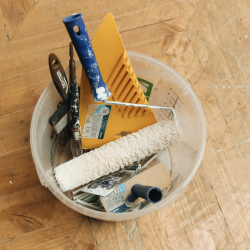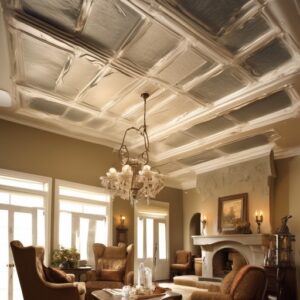Water damage can be a homeowner’s worst nightmare, particularly when it affects the ceiling. Whether it’s from a leaky roof, burst pipes, or heavy rainfall, ceiling water damage requires immediate attention to prevent further structural issues and mold growth. In this comprehensive guide, we’ll delve into the steps you need to take to effectively handle ceiling water damage and restore your home to its former glory.
Assess the Situation
The first step in dealing with ceiling water damage is to assess the extent of the damage. Look for signs such as water stains, sagging ceiling panels, peeling paint, or dripping water. Determine the source of the leak if possible, whether it’s from the roof, plumbing, or condensation buildup.
Stop the Water Source
Once you’ve identified the source of the leak, take immediate action to stop the flow of water. This may involve temporarily patching a leaky roof, shutting off the main water supply to the house, or fixing a burst pipe. The sooner you stop the water source, the less damage will occur.
Protect Your Belongings
If water is dripping from the ceiling, move any furniture, electronics, and valuables out of harm’s way. Place buckets or containers underneath the leak to collect dripping water and prevent further damage to your belongings.
Drain Excess Water
Use towels, mops, or a wet/dry vacuum to remove any standing water from the affected area. Be sure to wear protective gear such as rubber gloves and boots to prevent contact with contaminated water.
Dry the Area
Proper drying is crucial to prevent mold growth and further damage to the ceiling and surrounding structures. Use fans, dehumidifiers, and open windows to promote airflow and expedite the drying process. Consider renting industrial-grade equipment for large or severe water damage.
Inspect for Mold
Even if you don’t see visible mold growth, it’s essential to thoroughly inspect the affected area for signs of mold. Mold can thrive in damp, dark environments and can pose serious health risks if left unchecked. If you suspect mold growth, consider hiring a professional mold remediation service to safely remove it.
Repair the Ceiling
Once the area is completely dry and free of mold, assess the damage to the ceiling. Depending on the severity of the water damage, you may need to replace damaged drywall, ceiling panels, or insulation. Patch any cracks or holes in the ceiling and apply a fresh coat of paint to restore its appearance.
Address the Root Cause
To prevent future ceiling water damage, it’s crucial to address the root cause of the leak. Repair any damaged roofing, plumbing, or insulation and take proactive measures to prevent future leaks. Regular maintenance, such as inspecting your roof for missing shingles or checking for pipe leaks, can help identify and mitigate potential issues before they escalate.
Conclusion
Ceiling water damage can be a stressful and challenging situation for homeowners, but with prompt action and proper restoration techniques, you can minimize the damage and restore your home to its original condition. By assessing the situation, stopping the water source, protecting your belongings, drying the area, inspecting for mold, repairing the ceiling, and addressing the root cause of the leak, you can effectively handle ceiling water damage and prevent future incidents. Remember, when in doubt, don’t hesitate to seek professional help to ensure thorough restoration and peace of mind.


